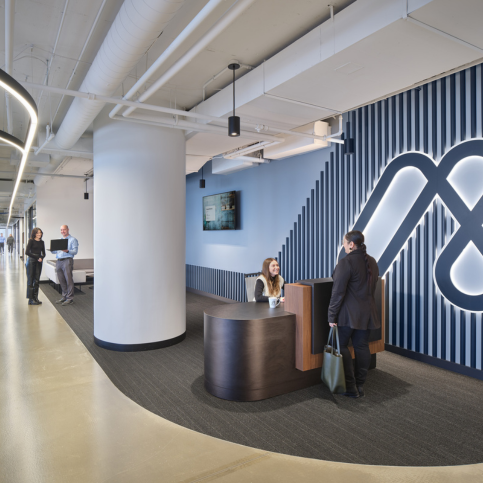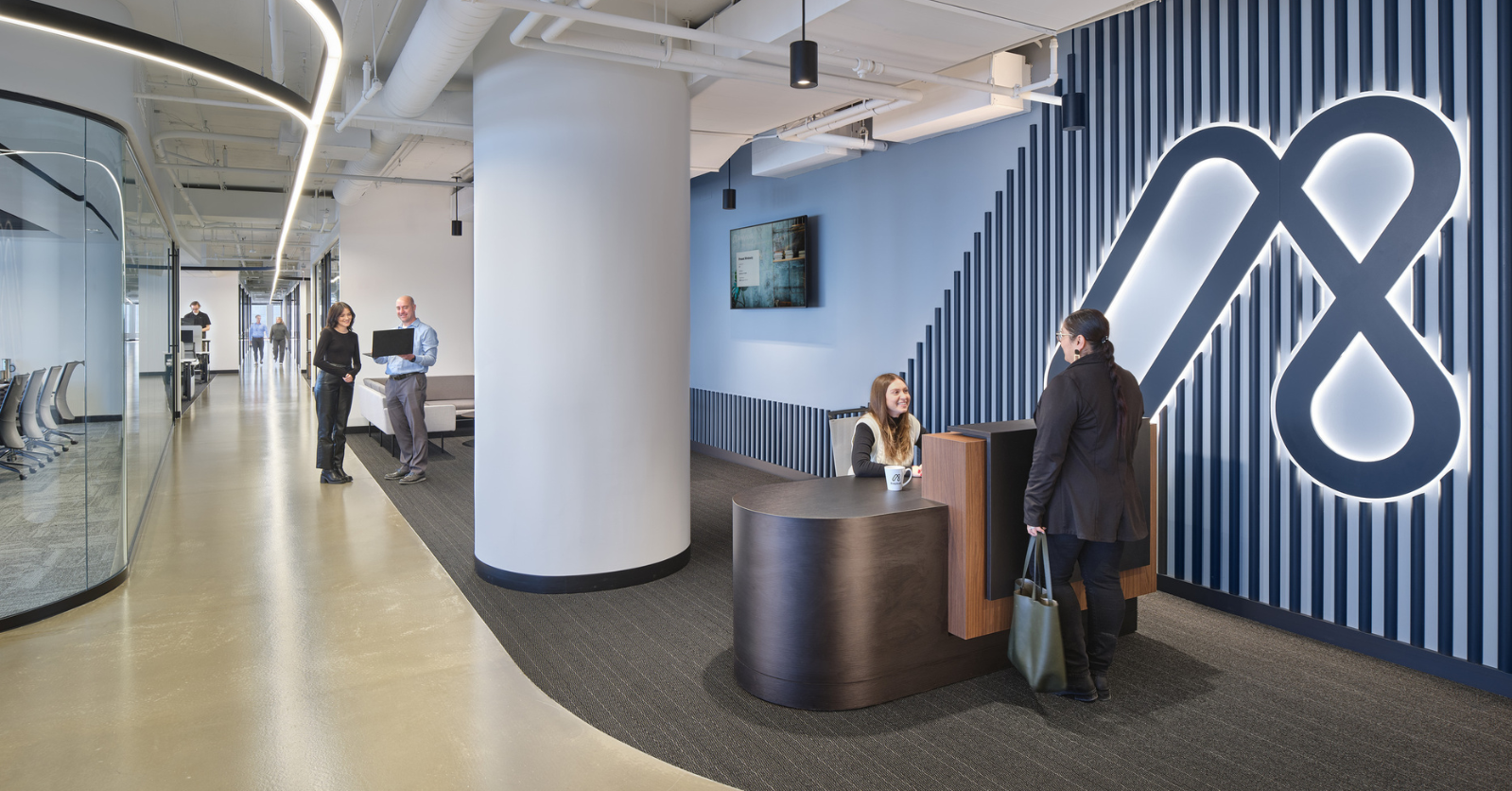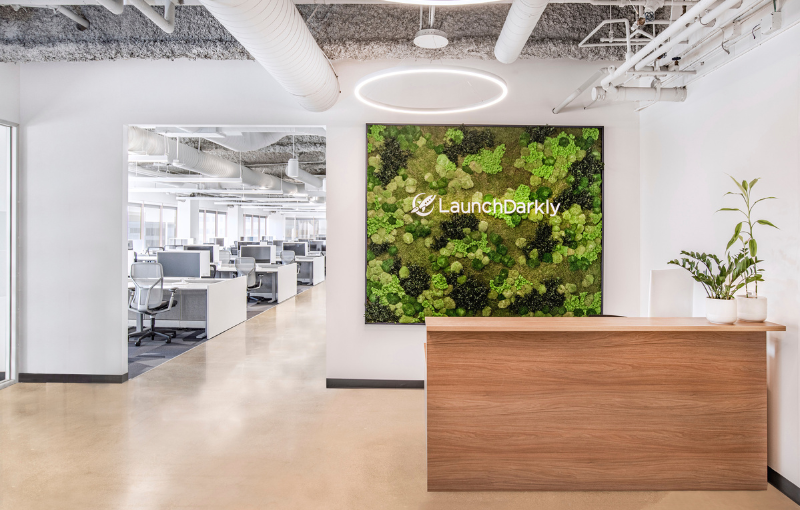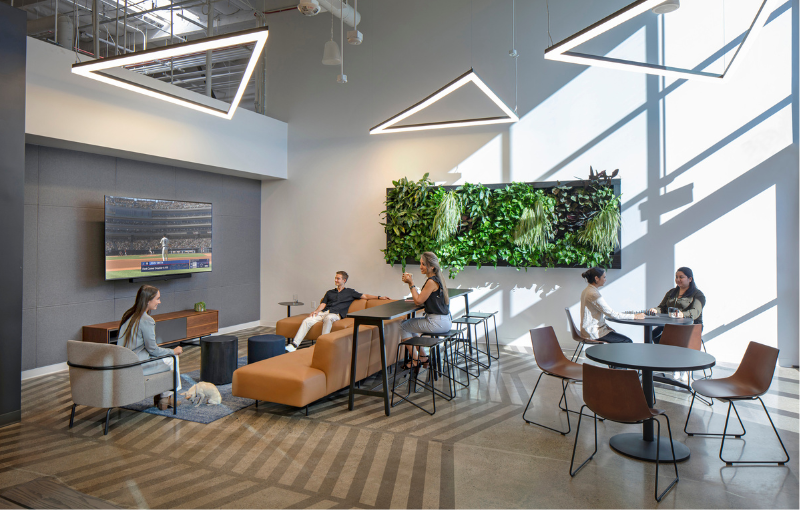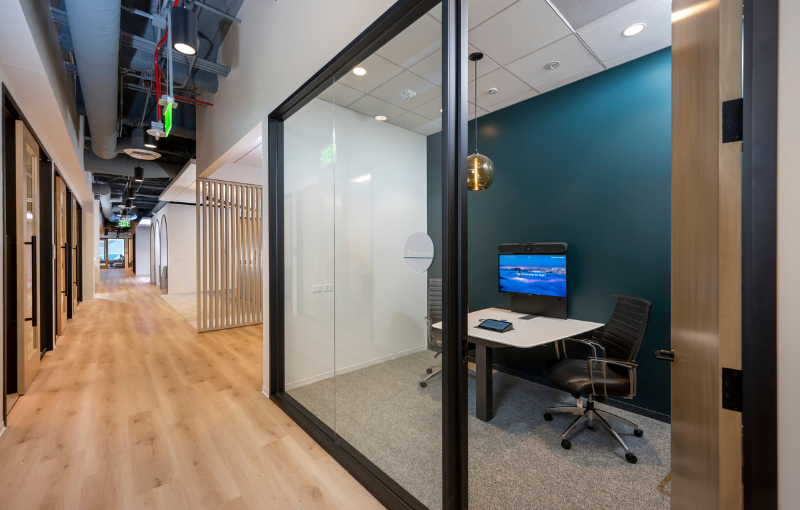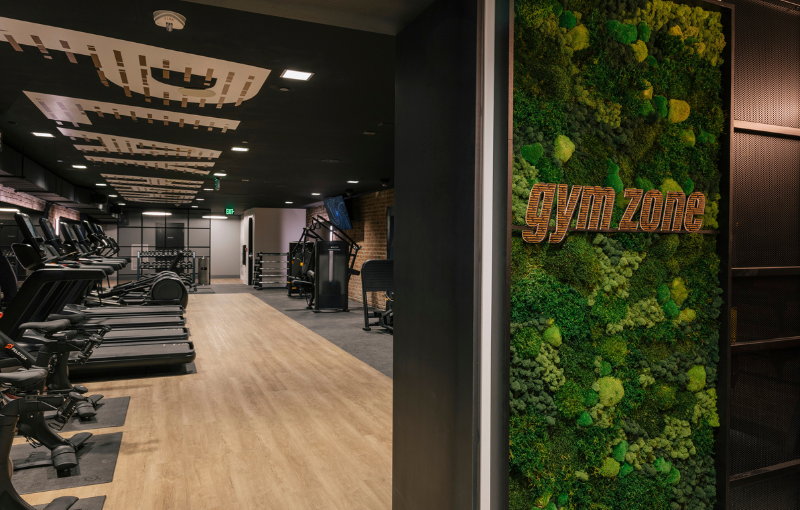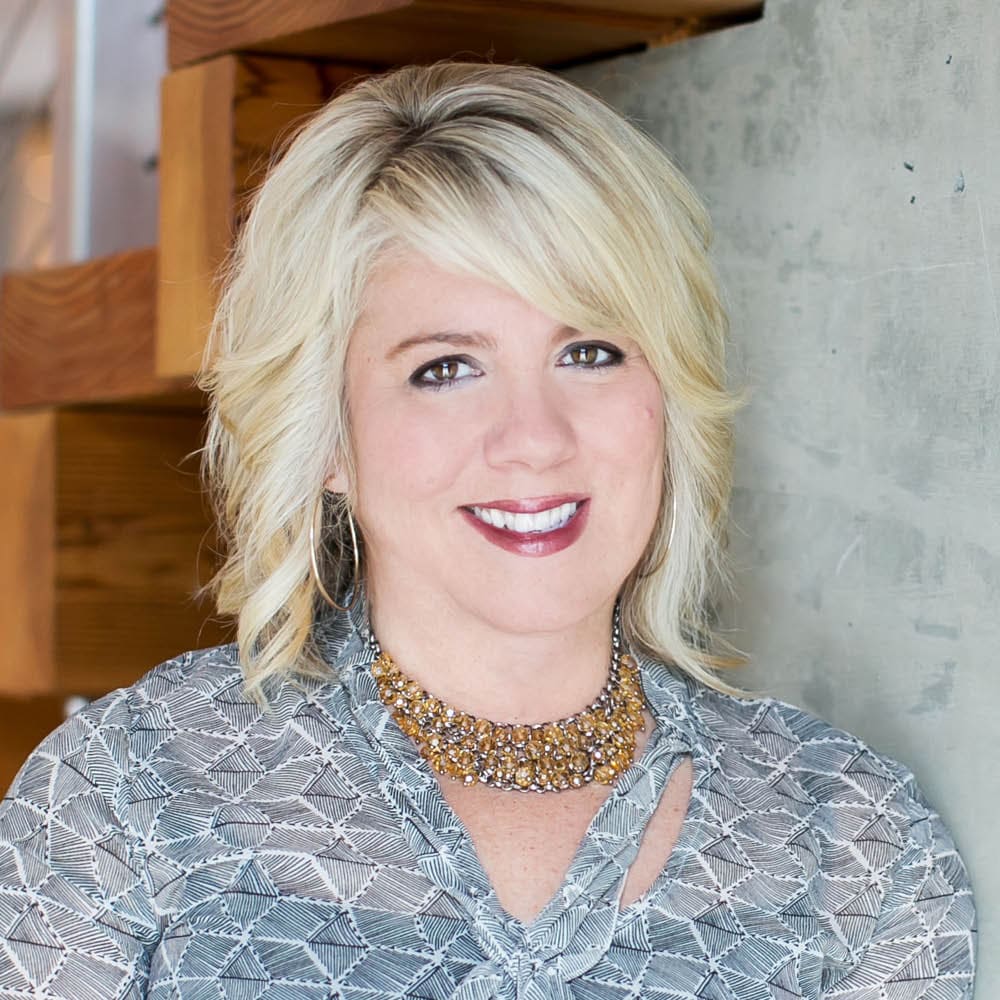At Ware Malcomb, we design and deliver innovative spaces that align with our clients’ specific needs and objectives. With offices across the Americas, we are proud to share that 1 in 3 Fortune 50 companies are Ware Malcomb clients. It is this knowledge and expertise that provides us the insight and forethought to reflect on, analyze, and explain the evolution of the workplace.
In 2024, we are now four years removed from the start of a global pandemic. We can clearly see the line in the sand of the “then and now” as it relates to the needs and use of corporate office space, including but not limited to the space we use, the amenities we look for, the technology required to participate in the day-to-day events, and the in-office employee experience.
We have identified patterns of change over the course of the last four years as it relates to workplace environments in North America.
Office Spaces
Traditionally, offices/workstations had an 80% share of the floor plan – a ratio that made individual spaces more important than community workspace. These layouts were very hierarchical and compartmentalized and reflected the outdated office way of working and supporting a thriving office culture. Gone are the dedicated executive suites (or floors).
Today, the ratio we are seeing a shift to 70% prioritization on social spaces, team rooms, focus rooms, collaboration spaces as opposed to singular offices and workstations. Creating spaces where teams can come together. Furthermore, the trends of the past required assigned seating, again, focusing on the hierarchy of the office. Future-thinkers were early adopters of hoteling, but assigned seating was still the norm even in a hoteling environment. Today, seat sharing is more common than not, and for various companies a up to a 2:1 sharing ratio helps minimize the cost of an expansive office footprint. The seat sharing can be a formalized or informal – i.e. no reservations.
The shift of including biophilic design and wellness initiatives in space planning is on the rise. In the past, an initial focus on daylight and advantageous views helped attract notable talent. However, after years of social-distancing, masking, and prioritizing health, tenants gravitate to spaces that include greenery, automatic sanitation features, and top-notch air filtration systems. These features resemble what employees had during their work-from-home months: access to the outdoors. By asking employees to return to the office, employers have learned access to biophilia, and wellness has had a positive impact on their teams and increased employee retention.
At LaunchDarkly, a biophilic wall greets employees as they head into their open office environment, beaming with natural light.
Workplace Amenities
Before the pandemic, workplace amenities were designed with the guest or client in mind, not necessarily the employees. We saw a prioritization of time and money put into reception and lobbies, conference rooms, or client-facing spaces. This was a result of the “behind the scenes” theory that work could only happen tucked away in an office, a conference room, or a designated workstation. It wasn’t thought that work could happen while sitting on a comfortable couch, tucked away in a Zoom Room, or even outside.
Thankfully, after months of getting creative about where and how we worked, the result was a new hospitality-driven workplace. Today, the must-have spaces aren’t just for the benefit of clients, they also benefit tenants and employees. Amentization can occur within office suites or in community spaces within an office building. Flexible zones such as town halls and cafes are a must-have, both within an office and in the building itself. These spaces allow team members to work, celebrate, host, network and even train. By offering a variety of work zones, including Zoom Rooms, the workplace has integrated into a flexible, customized ecosystem. The best part? Today, a lot of buildings offer outdoor space integrated into their offices. Whether it’s a nearby trail for walking meetings, a patio for lunch, or an outdoor bar for after-hours events, the outdoor amenity space is here to stay.
At Compass Diversified, a town hall creates connectivity between team members. An emphasis on varied seating options, technology, natural light, and biophilia make this space an option for recharging, collaboration, or celebrations.
Workplace Technology
Technology is all around us, which means it’s not about whether you have it but how well it works. Prior to a world filled with virtual meetings, technology that incorporated virtual meeting platforms was often only found in large conference spaces, saved for special long-distance meetings. Now, a virtual meeting might occur with folks in the same office space, making upgraded technology necessary in all meeting and gathering areas.
In addition to formal meeting and gathering areas, technology at personal workstations now needs a “plug and go” set up – allowing anyone to sit down and get to work, whether it’s their designated space or not. In today’s workplace laptops are preferred to desktops which cannot be taken on the go. By offering employees a chance to reserve a desk, if one is not assigned, and the capability to plug in easily, office environments become extremely flexible.
A meeting room designed for Withersworldwide offers a private space with the capability to connect to virtual meetings through easy-to-use technology. Different lighting options allow the user to control the brightness within the room, depending on whether they are joining a virtual meeting or using the space for focus work.
Employee Experience
With return-to-office initiatives all over the board, employees are looking for an environment that suits their personal and family needs. Employees are not racing to find the nearest job that offers a monthly social event, a foosball table, or unlimited coffee but rather they prioritize convenience, flexibility, and wellness. That is why today we see companies prioritizing regularly scheduled and curated events that range from fitness initiatives to altruistic community involvement.
Many team members look for a hybrid schedule that embraces the two to three days in the office, allowing them to skip a stressful commute or make a personal commitment on time. These preferences are acknowledged by companies that collect on-going feedback from the team, as opposed to an annual employee survey and those that collect, review, and implement feedback effectively see a higher level of retention in their teams. By opening the door to collaboration and constructive feedback, we say goodbye to the days of utilitarian office environments and hello to a hospitality-inspired workplace, tailored to the company’s brand story and their people.
A hospitality-driven fitness studio within the 33 New Montgomery office building plays into the building’s brand story as part of a whole-building improvement project which also included the main lobby, building façade, and common area upgrades. The studio allows tenants to prioritize their health and wellness with the incorporation of biophilia into the moody space.
Additional Insights
We know organizations are challenged to adapt to ever-changing business demands. Workplace Strategy solutions can deliver a competitive advantage to our clients by providing data-driven insights to help transform employee experience, enhance company culture and support business objectives.
At Ware Malcomb, our Envision Sessions help to create and share emerging strategies and themes as well as clarify goals and priorities. We are proud to offer our national insights into workplace strategies and a data-driven approach. Our integrated teams create a plan which aligns workplace strategies with our design process, creating unique environments and building long-standing client relationships.
While the difference between then and now may not seem drastic in conversation, on paper, the results speak volumes. It is because of these changes that we are seeing a shift in rentable square footage as facilities are less concerned with CAPEX and more focused on reallocating the funds to OPEX for employee experiences.
We are seeing a growing presence of live, work, play communities rather than siloed office buildings simply because employees have a choice: to work in an environment that prioritizes flexibility, convenience, and wellness or to remain stagnant in a space that boasts outdated utilitarian qualities.
Through extensive studies of user needs, environmental and market research, our team draws from client-driven experiences to remain at the forefront of thought leadership and advancements in interior architecture and design.
